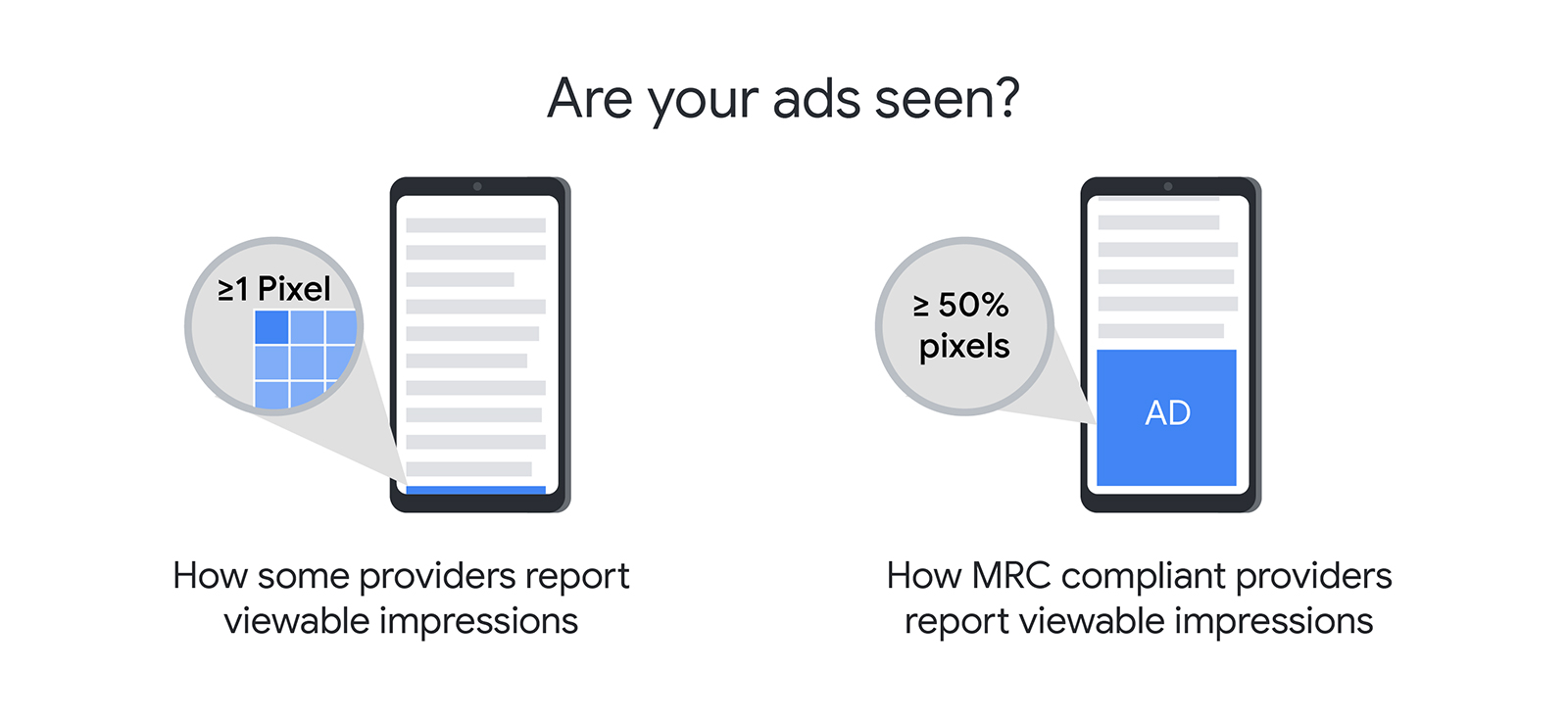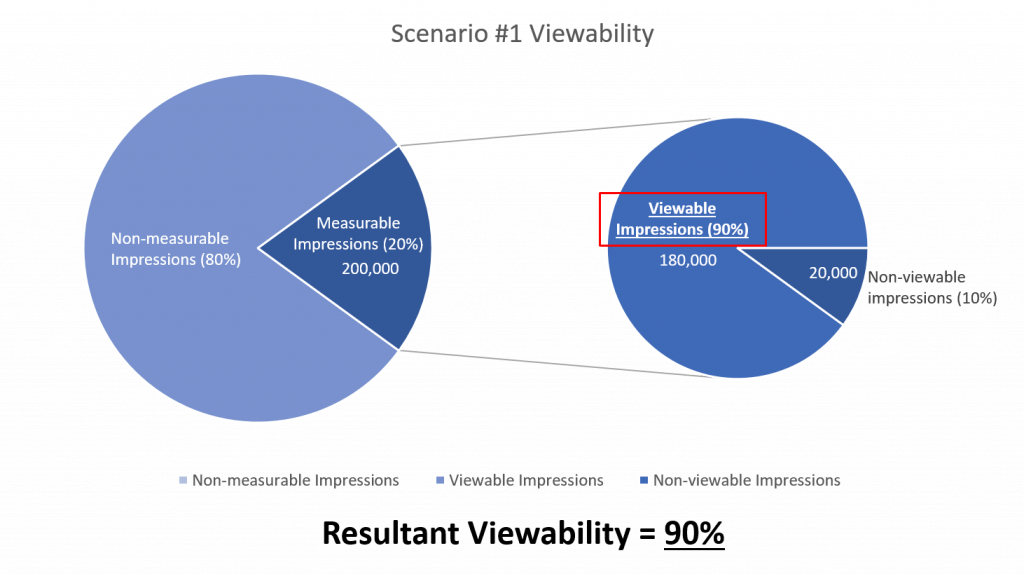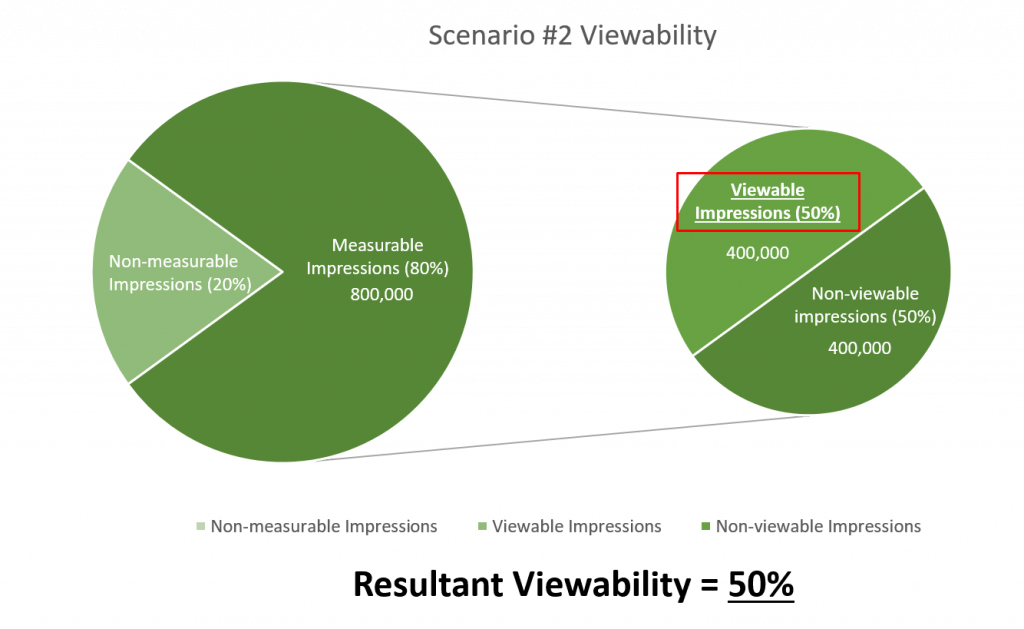In 2020, eMarketer reported $378.16 billion in digital ad spend globally despite the pandemic. In this massive market, advertisers are constantly trying to get users’ attention every single time, but how do they determine whether their ads can be seen? We are a deep-dive on this fundamental metric: viewability.
Using a hypothetical CPM of $7, $378.16 billion translates into 55 trillion ad impressions yearly. Note that this is a conservative number given how CPMs vary due to their real-time nature, and the wide availability of non-CPM buying models. Hence, that is a massive load of ad impressions going around to reach users like you and me.
For any ad trying to make an impression (no pun intended) on users, it first needs to have the opportunity to be seen. That is how the term, Viewability, came about at least nine years ago. While the standardisation of what constitutes “a view” was a game-changer to the advertising industry, it also resulted in many varying interpretations and inconsistencies.
To counter this problem, the Media Rating Council (MRC), a US-based non-profit organization that sets media standards and issues media accreditations, provided an industry guideline to Viewability in 2014 for mass adoption. You may read the most up-to-date MRC guidelines here:

We have also summarised the Viewability definition below.
What is Viewability?
Viewability is defined as the opportunity for an ad to be seen based on pre-defined criteria.
- Display ad is viewable when 50% of the ad is in view for at least 1 second
- Video ad is viewable when 50% of the ad is in view for at least 2 seconds
- Large ad is viewable when 30% of the ad is in view for at least 1 second
- Ad is considered large when it is at least 242,500 pixels; 970×250 qualifies as a large ad.
If you want to see how Viewability works in real-time, Think With Google has this fantastic demo.
To those who wish to know more about the techniques used in measuring Viewability, you can check out IAB SEA+India’s Viewability white paper here.
Calculating Viewability on Your Campaigns
To calculate Viewability for your digital campaign, you have to be using a Viewability measurement provider. The following are some of the prominent providers in alphabetical order.
- Active View by Google
- DoubleVerify (DV)
- Integral Ad Science (IAS)
- Moat by Oracle Data Cloud
Through these providers, the following metrics will be available:
- Total Impressions – Total impressions recorded for the campaign.
- Measurable Impressions – Impressions that can be measured for Viewability.
- Viewable Impressions – Impressions that meet the viewability criteria.
Which are then used to calculate the following:
- Measurability = Measurable Impressions / Total Impressions
- Viewability = Viewable Impressions / Measurable Impressions
Many often look solely at Viewability; however, that only gives you a small part of the picture. Below is an example to illustrate why looking at Viewability alone is insufficient:
Suppose we have the following scenarios for a campaign that delivered 1,000,000 impressions:
1) 200,000 measurable, 180,000 viewable → 20% Measurable, 90% Viewable

2) 800,000 measurable, 400,000 viewable → 80% Measurable, 50% Viewable

Based on the Viewability percentage alone, Scenario #1 may seem better. However, if we compare both scenarios using absolute values, that is not the case. As the measurability of impressions from Scenario #2 is high (80%), we are certain that 400,000 impressions are seen by people. albeit overall viewability rate is lower (50%).
Most of us would report that Scenario #1 outperforms #2, as Measurable Impressions numbers are often not taken into account. This gives us an incomplete picture of our campaign’s actual Viewability performance.
Thus, it is essential to have both Measurability and Viewability to assess your digital campaign’s Viewability.
Frequently Asked Questions (FAQs)
Now that we have an idea of what Viewability is, we will touch on three common questions that typically come up on the topic:
Higher Viewability = Better Performance?
It seems like a no-brainer – viewed ads have a chance to influence consumers and thus, resulting in better performance. However, most brands won’t find that’s the case due to the current and easier way of measuring “success” in media.
Clicks: Often used as a key indicator of a successful campaign, but as a consumer, how often do you click on an ad? Probably not as often as marketers like to think. That aside, current clicks are measured regardless of ad viewability. Hopefully, most of the clicks generated in your campaign came from viewable ads; otherwise, it does raise some questions about its legitimacy and effectiveness.
Attribution: Current measurement does not consider whether an ad was viewed, and all it does is match cookies/IDs on a conversion event with that on an impression or click event. This brings about many bad actors who game the system through “cookie bomb” or “spray and pray” tactics to get as many cookies/IDs exposure to land the attribution credit.
Is 100% Viewability Possible?
Definitely not. First, we have to understand what influences Viewability which can be broken out into two factors:
#1 Ad position on the page: You can expect Viewability to vary depending on where publishers choose to position their ads on the page.
For example, ads placed in-between content tend to record higher Viewability as users spend more time on that part of the page than ads placed near the end of a page where very few users scroll down far enough.
#2 Human behavior: Even the best-positioned ad or the stickiest of ads will not be viewable, if you have users behaving ‘different’ from what you expected.
For example, publishers place an ad near the content headline based on the assumption that users will spend some time reading the headline, thus spending enough time for the ad to be viewable. However, you need just one user to have a completed different behavior pattern where they prefer to skip past the headline to the content directly to prevent a 100% viewability score.
Why are my ads not viewable?
The three most common reasons are:
#1: Hidden tabs or inactive browsers: Since ads loaded in hidden tabs or inactive browsers are not in the active viewing area of the screen, they don’t count as viewable.
#2: Technical challenges: Compatibility across various technology environments may cause measurement techniques not to function as intended.
#3 Ads did not load: Long loading time on web pages due to various factors such as slow internet connection or large ad file size. Or, user scrolls or navigates away from the page before the ads can load.
Summary
TLDR;
- Viewability doesn’t guarantee that a user saw the ad; it simply measures the opportunity for the ad to be seen.
- High Viewability is ideal; however it is also essential to ensure high Measurability along with it.
- There is an industry standard to defining a viewable ad though you can enforce your custom definition to be stricter than the industry standard.
- Be conscious of measuring “success” when taking Viewability into account. Avoid comparing with scenarios that intentionally take advantage of success measurement.
Hopefully, this article gives you some helpful insight on Viewability and makes you more knowledgeable about it. As always, please drop us a comment below or via email if you would like to share any thoughts.
Image Attribution
Feature Image by creativeart via Freepik
